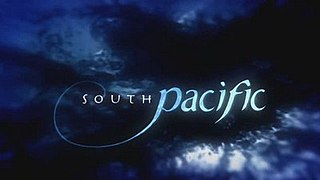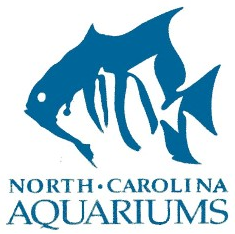Episodes of Built For The Kill cover a topic or habitat for predatory animals, such as "Coral Reef" or "Packs". If the episode is the name of a Habitat (Coral Reef), the episode will feature predators from that environment. If the episode's name is something like "Jaws" or "Packs", it will feature predators who utilize the name of the episode. Built For The Kill uses a graphical approach to catch the audiences attention, often showing inner workings of the predatory animals (e.g. showing a snake's "Jacobson Organ" inside its mouth) by using diagrams. Some effects seen are used to show the audience what they can't really see, but is there (such as the electricity coming from an Electric Ray or the sound waves used in Echo Location). This graphical approach to nature is meant to make the documentary more interesting to watch.
Built for the Kill's classic opening was a montage of creatures featured in the first 7 episodes (Desert, Coral Reef, Rainforest, Grassland, Miniature, Swamp and Ocean) with a catchy theme song. This opening was changed further into the series to one that shows the National Geographic logo in various parts. The theme song stayed the same however.
In 2011 National Geographic Channel resurrect the show with four new episodes. However, the four episodes were presented with a slightly different style than the original. The following four episodes are (lion, great white shark, polar bear, and crocodile) and is expected to be continued.

A barracuda is a large, predatory, ray-finned fish known for its fearsome appearance and ferocious behaviour. The barracuda is a saltwater fish of the genus Sphyraena, the only genus in the family Sphyraenidae, which was named by Constantine Samuel Rafinesque in 1815. It is found in tropical and subtropical oceans worldwide ranging from the eastern border of the Atlantic Ocean to the Red Sea, on its western border the Caribbean Sea, and in tropical areas of the Pacific Ocean. Barracudas reside near the top of the water and near coral reefs and sea grasses. Barracudas are targeted by sport-fishing enthusiasts.
Ron Josiah Taylor, AM was a prominent Australian shark expert, as is his widow, Valerie Taylor. They were credited with being pioneers in several areas, including being the first people to film great white sharks without the protection of a cage. Their expertise has been called upon for films such as Jaws, Orca and Sky Pirates.

Gorgona is a Colombian island in the Pacific Ocean situated about 28 km (17 mi) off the Colombian Pacific coast. The island is 9 km (5.6 mi) long and 2.5 km (1.6 mi) wide, with a maximum height of 338 m (1,109 ft) and a total area of 26 km2 (10 sq mi). Gorgona is separated from the continent by a 270 m (890 ft) deep underwater depression.

Royal Burgers' Zoo is a 45-hectare (110-acre) zoo in Arnhem, Netherlands, and is one of the biggest zoos in the country. Arnhem is a city that lies within the Veluwe, a nature park in the east of the Netherlands. The zoo is popular with both Dutch and German people, and receives about 1 million visitors annually. It was founded by Johan Burgers in 1913.

The environmental impact of fishing includes issues such as the availability of fish, overfishing, fisheries, and fisheries management; as well as the impact of industrial fishing on other elements of the environment, such as bycatch. These issues are part of marine conservation, and are addressed in fisheries science programs. According to a 2019 FAO report, global production of fish, crustaceans, molluscs and other aquatic animals has continued to grow and reached 172.6 million tonnes in 2017, with an increase of 4.1 percent compared with 2016. There is a growing gap between the supply of fish and demand, due in part to world population growth.

National Aquarium Denmark, Den Blå Planet is a public aquarium in Denmark. The original aquarium was located in Charlottenlund, but this facility closed in 2012 and most of the animal collection was relocated to the new and much larger aquarium Den Blå Planet in Kastrup, a suburb of Copenhagen. The National Aquarium Denmark, Den Blå Planet opened to the public in March 2013 and is the largest aquarium in Northern Europe.

MonsterQuest is an American television series that originally aired from October 31, 2007 to March 24, 2010 on the History channel. Produced by Whitewolf Entertainment, the program deals with the search for various monsters of interest to the cryptozoology subculture and paranormal entities reportedly witnessed around the world. A spin-off show, MysteryQuest, which focuses on unsolved mysteries, premiered on September 16, 2009.

Land of the Tiger is a BBC nature documentary series exploring the natural history of the Indian subcontinent, first transmitted in the UK on BBC Two in 1997. The production team covered the breadth and depth of India, from the Himalayan mountains in the north to the reef-fringed islands of the Indian Ocean, to capture footage of the country's wild places and charismatic wildlife.
The Living Edens was a Public Broadcasting Service series that aired from 1997 to 2003. Narrators included Peter Coyote and Linda Hunt. It was partially funded by Reader's Digest in exchange for various marketing rights.

South Pacific is a British nature documentary series from the BBC Natural History Unit, which began airing on BBC Two on 10 May 2009. The six-part series surveys the natural history of the islands of the South Pacific region, including many of the coral atolls and New Zealand. It was filmed entirely in high-definition. South Pacific was co-produced by the Discovery Channel and the series producer was Huw Cordey. It is narrated by Benedict Cumberbatch. Filming took place over 18 months in a variety of remote locations around the Pacific including: Anuta, Banks Islands, French Frigate Shoals, Papua New Guinea, Palmyra, Kingman Reef, Tuvalu, Palau, Caroline Islands, Tuamotus and Tanna Island in Vanuatu.

North Carolina Aquariums is a system of three public aquariums located in Kure Beach, Roanoke Island and Pine Knoll Shores. All are operated by the Aquariums Division of the North Carolina Department of Natural and Cultural Resources since 1976 and were accredited by the Association of Zoos and Aquariums. All three aquariums feature dive shows, live animal encounters, and feeding programs.

Downtown Aquarium is a public aquarium and restaurant located in Houston, Texas, United States that was developed from two Houston landmarks: Fire Station No. 1 and the Central Waterworks Building. The aquarium is located on a 6-acre (2.4 ha) site at 410 Bagby Street in downtown Houston. It houses over 200 species of aquatic animals in 500,000 US gallons (1,900,000 L) of aquariums. The complex includes two restaurants, a bar, and banquet facilities. It offers programs such as Marine Biologist for a Day, Zoologist for a Day, Sea Safari Camp, overnight stays and more. The education department works with school groups and conducts outreach programs.

Jonathan Bird's Blue World is a family-friendly underwater science/adventure television program. The program is hosted by underwater cinematographer Jonathan Bird. This series airs on public television stations in the US. The program is designed for family viewing, and each segment finds Bird trying to unravel a mystery, witness an animal behavior or explore an underwater environment. The first season consisted of 5 half-hour programs filmed in standard definition, and the subsequent seasons were all shot in high-definition. The second and third seasons each won four New England Emmy Awards. The fourth season was nominated for a 2013 National Daytime Emmy Award. The pilot episode from season 1 won a CINE Golden Eagle Award. The program is magazine format with each television episode consisting of 2-3 segments. These segments appear individually on YouTube and the Blue World website as webisodes. There are currently 6 seasons.
Lego World Racers was a Lego theme that centred around two racing teams competing to win the world cup. The first six sets were released in May and June 2010, with an additional three sets being released later in 2010. The theme was discontinued in the same year.
The Undersea Adventures of Captain Nemo is a Canadian animated television series of five-minute cartoons produced in 1975 by Rainbow Animation in Toronto, Ontario. The series follows the underwater adventures of Captain Mark Nemo and his two young assistants, Christine and Robbie, in their nuclear-powered submarine, the Nautilus.

The reef manta ray is a species of ray in the family Mobulidae, one of the largest rays in the world. Among generally recognized species, it is the second-largest species of ray, only surpassed by the giant oceanic manta ray.
Saltwater fish, also called marine fish or sea fish, are fish that live in seawater. Saltwater fish can swim and live alone or in a large group called a school.

Valerie May Taylor AM is a conservationist, photographer and filmmaker, and an inaugural member of the diving hall-of-fame. With her husband Ron Taylor, she made documentaries about sharks, and filmed sequences for films including Jaws (1975).














